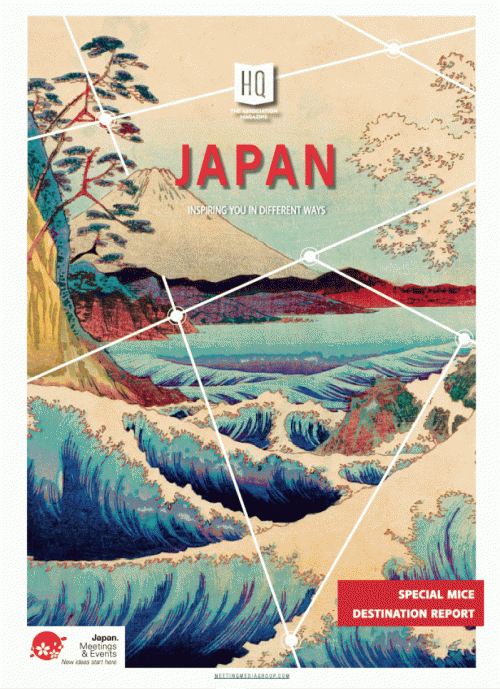Paula Rowntree: "True inclusivity in event design goes beyond accessibility requirements"

Paula Rowntree, a key speaker at The Meetings Show and Head of Events at the Australian Psychological Society, is a passionate advocate for inclusive event design, championing the idea that true accessibility goes beyond physical accommodations. Here, she shares her insights on why inclusivity is more than just a checkbox, how small changes can have a big impact, and why event planners must rethink traditional spaces to create truly welcoming experiences for all.
 "True inclusivity in event design goes beyond simply meeting accessibility requirements. It’s about creating spaces where every individual—regardless of their cognitive, sensory, or physical needs—feels comfortable, valued, and able to engage fully. While accessibility is often seen as a compliance issue, inclusivity is a mindset. It requires event organisers to think beyond physical access and consider how different people experience an event space.
"True inclusivity in event design goes beyond simply meeting accessibility requirements. It’s about creating spaces where every individual—regardless of their cognitive, sensory, or physical needs—feels comfortable, valued, and able to engage fully. While accessibility is often seen as a compliance issue, inclusivity is a mindset. It requires event organisers to think beyond physical access and consider how different people experience an event space.
One of the simplest yet most impactful ways to make an event truly inclusive is clear and proactive communication. Neurodivergent attendees, for example, benefit enormously from knowing what to expect in advance. The Meetings Show has teamed with EventWell to provide a quiet and relaxing space for event goers- allowing them to prepare for any sensory elements that may affect their experience, reducing anxiety and creating a more welcoming environment. Even without major budgets for large-scale redesigns, transparency around key details—such as noise levels, lighting conditions, and the availability of quiet spaces—can make all the difference. If an event includes background music, live entertainment, or flashing visuals, letting attendees know in advance empowers them to plan accordingly. A quiet space is only useful if people know where to find it and feel comfortable using it for its intended purpose.
Technology also plays a key role in fostering inclusivity. Thoughtfully designed digital tools can enhance the event experience, but only if they are accessible. Ensuring event websites, apps, and materials are compatible with screen readers, captions, and alternative text makes them more user-friendly for everyone. Live captions are invaluable for those with auditory processing challenges, while customisable settings within event apps allow attendees to tailor their experience to suit their cognitive needs. Even something as simple as checking colour contrast on screens and printed materials ensures that information is clear and readable for all.
Small adjustments in event design can also have a significant impact. Seating options, for example, play a crucial role in how inclusive a space feels. A simple yet effective change is to introduce tall tables at the back of rooms, allowing people to stand comfortably without feeling out of place. This benefits attendees with back pain, those who struggle with prolonged sitting, or anyone who prefers a little more personal space. If budget allows, integrating a mix of lounges, bean bags, textured rugs, and café-style seating into event spaces creates a more welcoming atmosphere and caters to different sensory needs. Quiet spaces aren’t just beneficial for neurodivergent attendees—they can offer a moment of respite for anyone overwhelmed by the intensity of a busy event. Converting an underutilised green room or meeting space into a designated tranquillity area can make a real difference to overall attendee comfort.
When event spaces are designed with inclusivity in mind, engagement and interaction improve across the board. Creating environments that remove barriers to participation—whether through flexible seating, clear communication, or sensory-friendly networking areas—results in a more dynamic, engaged audience. Attendees are more likely to contribute to discussions, absorb information effectively, and make meaningful connections when they feel supported in the space around them. Many of these principles don’t just benefit neurodivergent individuals; they also enhance the experience for introverts, non-native language speakers, and those with different learning styles.
The responsibility for inclusivity doesn’t just fall on event organisers—it needs to be embedded in the entire event culture. It’s not about ticking boxes; it’s about ensuring that every person who walks through the door feels like they belong. This starts with education. Teams should be equipped with the knowledge and awareness to recognise diverse needs and respond accordingly. For practical guidance, I recommend the APS/APA Neurodiverse Inclusive Guidelines for the Events Industry- a dynamic, evidence-based framework offering a clear and practical guide for staff, providing tools to educate their teams on common challenges and effective solutions. Regularly reviewed and updated, it ensures the approach stays current, relevant, and impactful. Creating an inclusive culture means fostering an environment where flexibility is encouraged, real attendee feedback is valued, and every detail is considered with a broad range of experiences in mind.
No single event can perfectly cater to everyone, but small, intentional changes make a world of difference. The most successful events are those that don’t just accommodate people—they make every individual feel like they were considered from the start. Designing for inclusivity isn’t just about accessibility. It’s about respect, comfort, and ensuring that every attendee has the opportunity to experience the event in a way that works for them. When we design with neurodiversity in mind, we create better events for everyone."









